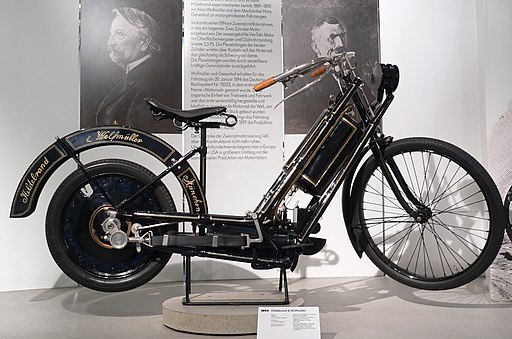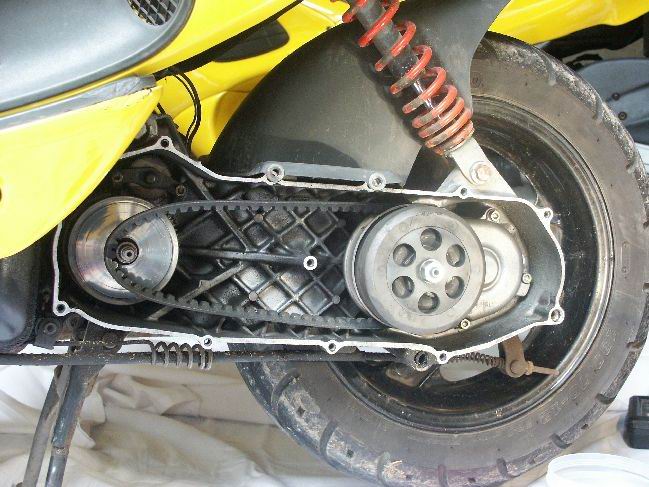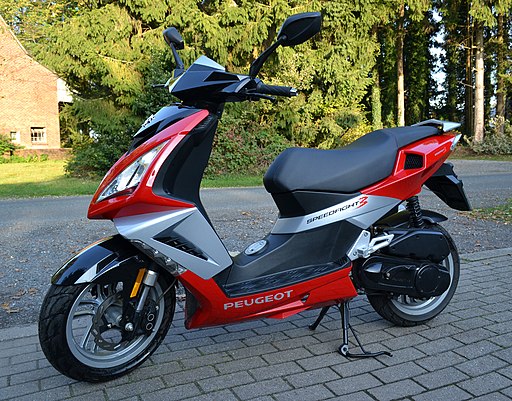The Scooter
By BeMoto
The origins of the Scooter can be traced back to 1914. The most recognisable features that define a Scooter and differentiate it from any other type of motorcycle are a step-through frame and a platform for the rider’s feet. Some further argue that these features can be traced back to the first motorcycle available for sale in 1894, produced by Hildebrand & Wolfmuller.
Throughout the early 1900's a number of manufacturers went on to produce a number of different incarnations and styles of Scooter, however it was post WW2 when the Scooter really caught on. In 1946 the Piaggio Vespa was launched, instantly becoming a sales success and setting the standard, closely followed in 1947 by Innocenti who introduced the Lambretta. The Scooter offered a very affordable form of transport for the masses, being both cheap to buy and run - important traits to have when money was tight and petrol rationed.
The Scooter now consistently tops the charts as the UK's most popular type of motorcycle for new registrations.
The Global Superstar
The Honda Super Cub has is the most produced motor vehicle in history with over 87 million built since production began in 1958.
'Twist & Go'
Think scooter and the term 'Twist and Go' comes to mind, some people also think that Scooters are automatics due to the fact that many have no clutch or gearbox. Firstly, not all scooters are Twist and Go, many incarnations of Scooters; specifically those produced by Lambretta and Vespa, have manual gearboxes with clutches. Secondly the large majority of 'Twist and Go' scooters don't have automatic gearboxes in their true sense; instead they have a Continuously Variable Transmission (CVT).
A CVT can change seamlessly through a continuous range of effective gear ratios; whereas a mechanical automatic transmission has a finite number of gear ratios. A CVT works extremely well for Scooters, the design negates the need for heavy and expensive mechanical transmissions keeping manufacturing costs down as well as being more user-friendly; the rider does not need to think about changing gear.
More recently with the development of larger capacity scooters (also referred to as 'Maxi-Scooters') Dual Clutch automatic gearboxes have in some cases been introduced; providing the rider with the ease of a 'Twist & Go' but with a transmission that is capable of dealing with the much higher brake horsepower (BHP) output of a larger CC engine.
Two-stroke vs. four-stroke
Two-stroke engines powered the large majority of Scooters until recently. In simple terms, the difference between a two-stroke and four-stroke is the number movements (strokes) of the piston up and down, per turn of the crankshaft, to complete a power cycle.
Part of the appeal of the two-stroke engine is that of a simple design requiring very few moving parts compared to a four-stroke engine, therefore it's cheap to produce as well as simple and cost efficient to maintain. The two-stroke also produces a higher output per CC than a four-stroke, a useful advantage for vehicles with low capacity engines. The simple design of the two-stroke engine has meant that it has been the engine type of choice for Scooters for many decades.
The disadvantage of the two-stroke is the pollution it emits, small two-stroke engines cannot be lubricated by oil contained within the sump and crankcase: the space in the crankcase is used to pump both fuel and air into the cylinder. Oil therefore has to be mixed with petrol to lubricate the moving internal parts; namely the crankshaft and the piston. The burning of this oil in the combustion chamber leads to high emissions emitting a blue smoke, for many years two-strokes have been dubbed 'stinkers' by motorcyclists for this very reason.
Over the years emission legislations have ever tightened leading motorcycle manufacturers to switch to four-stroke engines. Advances in technology have kept the two-stroke alive in the smaller capacity segment of the motorcycle market where Scooters are ripe. However advances in technology have also brought about reductions in manufacturing costs that are now bridging the gap between the two engine types. The case for the four-stroke powering lower capacity motorcycles, especially Scooters is stacking up. In the larger capacity segment of the scooter market the four-stroke engines dominate, offering refinement, durability and reliability.
Licence Types
The large majority of Scooters are between 50cc and 125cc meaning that they are one of the most accessible types of motorcycles across all bike licence types, hence their popularity.
Scooters up to 49cc (aka Moped) can be ridden by those aged from 16 with a Provisional Licence that have completed Compulsory Basic Training (CBT) as long as the Moped is restricted to 28mph and L-plates are displayed. 16 year olds have a further option to take a theory test, if passed an AM Licence will be awarded and the rider will not need to display L-plates.
Scooters over 49cc and up to 125cc can be ridden by riders from the age of 17 who have a Provisional Licence and valid CBT. Riders aged 17 or over also have the choice of passing a theory test to obtain an A1 Licence; when passed L-plates do not need to be displayed and riders can carry a pillion passenger.
Larger capacity Scooters are becoming ever popular with riders who have passed the A2 Licence (the first step in obtaining a Full 'Category A' Licence, allowing motorcycles to be ridden with a power output of up to 46.6 bhp) as well as with riders who have a full 'Cat A' licence. Larger capacity Scooters offer all of the advantages and practicality found with that of lower capacity Scooter, but with the speed and refinement to deal with longer journeys.
CC and Engine Configuration
As the large majority of scooters have very small engines (the majority being 50cc and 125cc) the most common engine configuration is a single cylinder meaning that it has just one piston and cylinder.
Scooters do however come in many different shapes and sizes, it is common for larger engined Scooters to feature twin cylinder engines. Mid-sized scooters tend to have parallel twin (also referred to as 'in-line twin') engines, 'parallel' denotes the layout of the cylinders i.e. next to one another.
It is becoming increasingly popular for large sized scooters to have V-Twin engines (also referred to as 'V2") the 'V' denotes the arrangement of the cylinders in a V configuration.
How can BeMoto protect your Moped or Scooter?
Here at BeMoto we recognise that not all Mopeds and Scooters are purchased to get from A to B; they can just as easily be the owners' pride and joy, an appreciating classic, a show winner..... The Scooter market is just as broad and diverse as any other motorcycle segment.
BeMoto offer tailored Scooter Insurance that is right for you.
Get a quote online or call us on 01733 907000* to speak to a bike specialist who understands your Scooter and what it means to you.

* Calls are recorded for our joint protection







